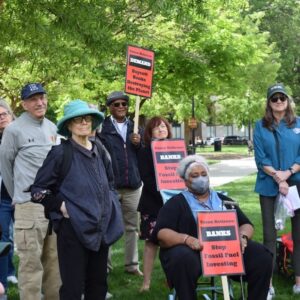July 1, 2017
Selection from the In-Service Register
(This article first appeared in the July-August 2017 issue of The American Postal Worker magazine.)
By Maintenance Craft Directors
We have noticed an uptick in the use of maintenance craft in-service registers. This makes it a good time to point out the in-service register “pecking order” on page 280 of the 2012 Joint Contract Interpretation Manual (JCIM). It is entitled Order for Filling Maintenance Craft Positions and gives a specific process for how our posted duty assignments are awarded.
Our in-service registers are used after the in-craft Preferred Assignment Register (PAR) and Promotion Eligibility Register (PER) are exhausted. Aside from the possible application of an individual retreat right due to prior Article 12 action, the next step to fill the vacancy should be to check for a transfer request from a Maintenance employee, as explained in item 7 of the “pecking order.” Assuming there are no existing transfer requests by a current Maintenance Craft employee, or all requests are completed, the inservice register comes into play.
This register of applicants is made up of employees who have taken the Exam 955 and were found eligible on the review panel interview. The registers are for specific Maintenance Craft positions, which are authorized for the installation. These positions are covered under the Maintenance Selection System (MSS). Handbook EL-304 has a detailed section on this process and on establishing and maintaining in-service registers. In-service registers may include bargaining unit employees from any craft within the installation. There is a specific order of consideration depending on their bargaining unit.
Maintenance Craft employees are ranked first priority, although to be on the in-service register a Maintenance employee must not be on, or have applied for, the incraft PER for that position. After Maintenance Craft employees, all other APWU represented employees are listed as next priority. Employees with the least advantage and ranking on the in-service register are employees not in the APWU bargaining unit, who have been rated eligible for that position. Within these groups, eligible employees are ranked in score order. After the inservice register is exhausted, transfer requests from craft employees in other installations are considered.
Detailed for Training
One more thing must be noted regarding the filling of vacant Maintenance positions, when a non-Maintenance employee is selected from the in-service register, that employee may be detailed to the position for training prior to the assignment’s start date. Page 287 of the JCIM plainly states:
Q: May an employee selected from an in-service register be placed into that position prior to the date (PS Form 50) of the new assignment?
A: Yes. An employee may be detailed to the position for training purposes for up to a two-week period ending with the reassignment.
This means a couple of things have occurred. The primary thing is that the individual is in fact selected from the in-service register.
If it is needed to get the person working in the duty assignment as quickly as possible, there can be a detail created solely for training purposes. The detail into the position occurs for no more than two weeks and must end on the Form 50’s effective date.
If the detail exceeds that specific two-week period, it would be a violation of Article 7, as this is a cross-craft assignment. It would likely violate Article 38.6 by enrolling a non-Maintenance employee into a job related Maintenance training opportunity. Additionally, it would adversely impact the individual’s proper seniority standing, rate of pay, and step assignment; their ability to move via the PAR and PER as they are not in the craft until the effective date of the Form 50; volunteering for other training opportunity and a host of LMOU issues, most notably with overtime assignments.
Similar to the hiring process off the entrance register, selections from the in-service register require a Form 50 to be processed and the employee must be assigned into the position title for which they were selected. Yes, there may be an issue to be addressed if there is a failure of subsequent training, but that does not change the fact that the reassignment must take place before the employee is permitted to work in a vacant Maintenance Craft duty assignment (outside of the
possible up to two-week detail).
As always, contact your local Maintenance Craft representative with any questions.
MS-1 Hearing
Six days of hearings went into national case Q10C-4Q-C 14171644 and we believe it went well.
The issue involved the extreme and drastic reductions proposed for building side staffing, which is primarily staffed by Building Equipment Mechanics (BEMs) and should be determined using the handbook MS-1.
The APWU pointed out the fallacy of management’s plan to eliminate much of the BEM work and contract out anything that was left. At the hearing, the Postal Service opined that gaps in their identification of work to perform will be left up to “local customization.” This is to be done by local management noting items they feel should be done and then providing justification for an exception to be approved by Area management.
No, seriously!
Due to a 2006 national agreement, all staffing handbooks and MMOs are covered under Article 19. Our presentation included testimony from a union safety specialist and four BEMs from around the country, as well as Assistant Director A Idowu Balogun (case officer) and Director Steve Raymer (who testified on rebuttal).
Our approach was two-pronged. We challenged both that the USPS violated the fair, reasonable and equitable criteria contained in Article 19 and that the Postal Service engaged in a “work and/or time measurement study or system” in violation of Article 34.
We also contended that the USPS was not yet ready to implement their concept, which is cutting hours and jobs by not doing work and/or subcontracting it.
The USPS assumptions put into the record included:
- That the Building Automation System (BAS) is actually in all locations and fully functional for remotely monitoring HVAC, and that this eliminates traveling routes and/or on-site trips. We know this simply isn’t true and we established it is not universal nor functional.
- That postal installations have been changed to LED lighting, which requires very little to no maintenance. Please look around your plant, find all those LEDs and then let us know.
- That a lot of work from routes are not being performed, therefore preventative maintenance is unnecessary and no longer needs to be staffed. We know the real reason this work isn’t being done is because of being understaffed!
- That FMO staffing determinations – which are actually based on work orders and not equipment – are appropriate for stations/branches and main post offices because they are similar in size to associate offices. This argument does not account for the differences in equipment – especially considering the main post office.
Following the filing of briefs on June 16, the decision is in the arbitrator’s hands.



